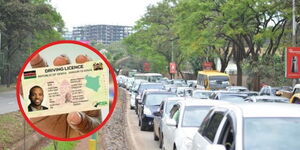The government advertises tenders in line with various laws, including the Public Procurement and Asset Disposal Act 2015.
The public sector tendering process is highly structured, and as a result, understanding the steps involved is important for those seeking to win public sector procurement opportunities with public bodies such as governments or local authorities.
Tendering begins with an invitation to tender, which is a formal, structured procedure for generating competing offers from different potential suppliers or contractors.
It thus involves physical submission, where one is tasked with printing out documents, binding them, making copies then submitting them to the company’s tender box. The online submission entails just uploading the documents on the company’s web portal.
Kenyans can find tenders from Kenya tenders, Integrated Financial Management System (IFMIS) tenders, KRA tenders, Kenya Government tenders, Kenya Public tenders and Kenya News.
IFMIS is an Oracle-based Enterprise Resource Planning (ERP) being used at both the National and County levels of government. It is aimed at enhancing accountability and transparency.
Nearly any business, from small and medium-sized enterprises (SMEs) to multinational organisations and institutions, can apply for public sector contracts.
Successful public tender applications comply with this specific series of steps:
1. Identify relevant opportunities for public sector contracts
The first step is to identify relevant tender opportunities that match your business or organization’s capabilities and objectives. You can find tender opportunities on mobile apps, government portals and local dailies.
2. Make sure you can fulfil the requirements of the tender
Once you’ve identified a relevant opportunity, the next step is to read the specification thoroughly and ensure that your organisation can fulfil each requirement of the tender.
Tender requirements may include proof of registration, tax compliance certificates and financial statements.
3. Express interest to the buyer
Once you have found an opportunity and are confident that your organisation can fulfil the terms of the contract, the next step is to show the buyer that you’re interested. This involves a formal response to the buyer, which is known as an Expression of Interest.
This stage is straightforward and involves contacting the buying authority and requesting the full documentation or downloading it yourself if it is available electronically.
4. Submitting the tender application
The next stage in the process is to prepare and fill in your response. At this stage, an individual or organisation is already aware of what the requirements for public sector contracts are, having thoroughly read the tender and ensuring that their organisation can fulfil them.
At this stage, the buyer will send out a Selection Questionnaire (SQ) and Pre-Qualification Questionnaire (PQQ) to obtain further information which can aid the bid and selection process.
The Government has released a Standardised Selection Questionnaire (SQ) document to streamline the process.
5. Evaluation of the tender
After the PQQ has been received, it will be assessed, evaluated and scored by the buying authority against their weighted scoring criteria.
You will know what these criteria are in advance, which will help you fill it out appropriately. Consider the weightings allocated to each section when preparing your bid response.
If you are successful at this stage, you will join the buyer’s shortlist. You will be issued an Invitation to Tender (ITT), which is a formal notification from an organisation inviting a supplier to submit a full tender response.
6. Awarding the tender
Finally, the most important step in the tendering process comes which is awarding the tender.
Writing and submitting your full tender is where the contract is won or lost, so make sure your organisation invests the necessary time and resources to ensure that it is as good as it can be and stands out from the competition.
This will require you to consider creating a team of bidders comprised of a member of staff from each relevant department to help you create a thorough bid.
Being able to sell yourself, and explaining the benefits you’ll offer as clearly and simply as possible when you fill out the necessary documentation is key at this stage.
After it has been received, your tender will be scored by the buying organisation to decide if you are the best fit to provide the goods and services that are required. The tender will be awarded to the business with the strongest bid response.
A tender is a project, and one must use all the available company resources to manage it effectively.
The public procurement process is regulated by The Public Procurement and Disposal Act, 2005, which came into effect on 1st January 2007 with publication in gazette as ‘’The Public Procurement and Disposal Regulation 2006”.
Additionally, the government of Kenya with a special program called The Access to Government Procurement Opportunities (AGPO) to safeguard the interest of women, youth and persons living with disabilities to increase their participation in nation-building.












